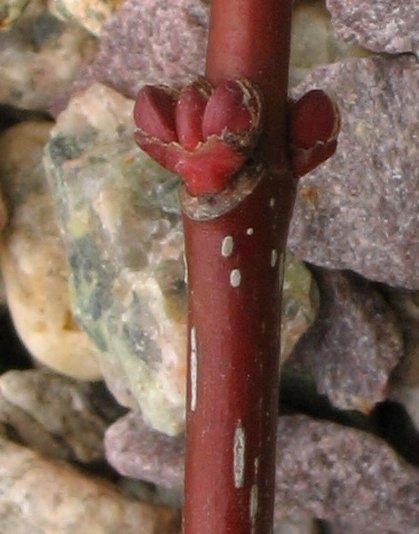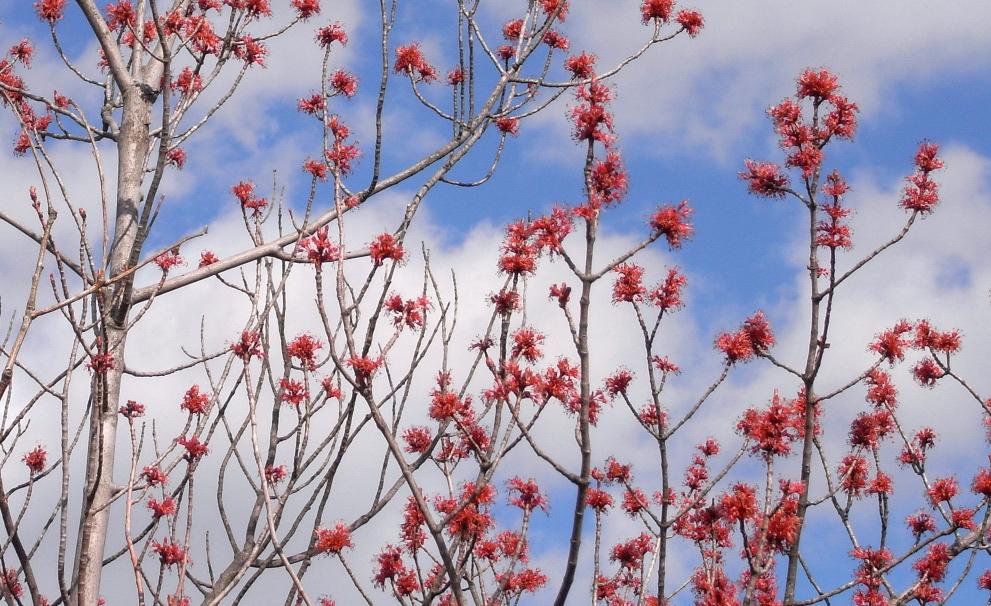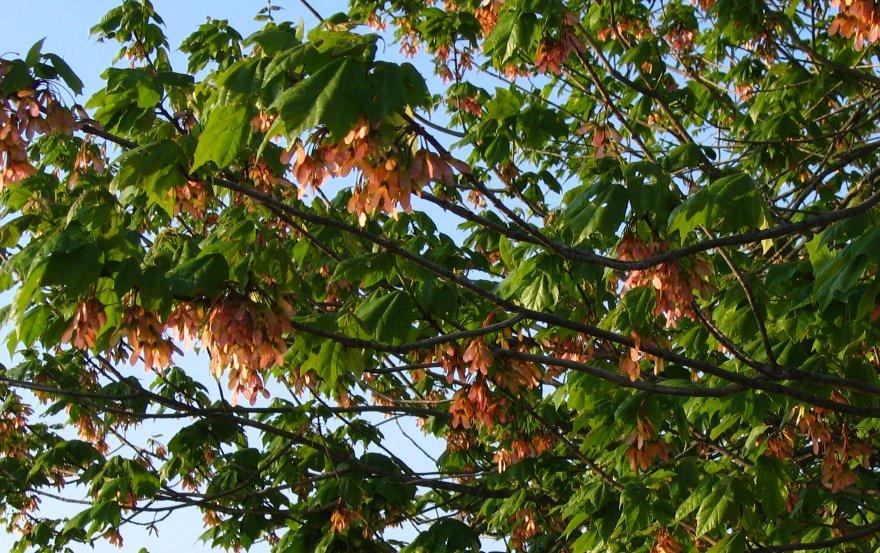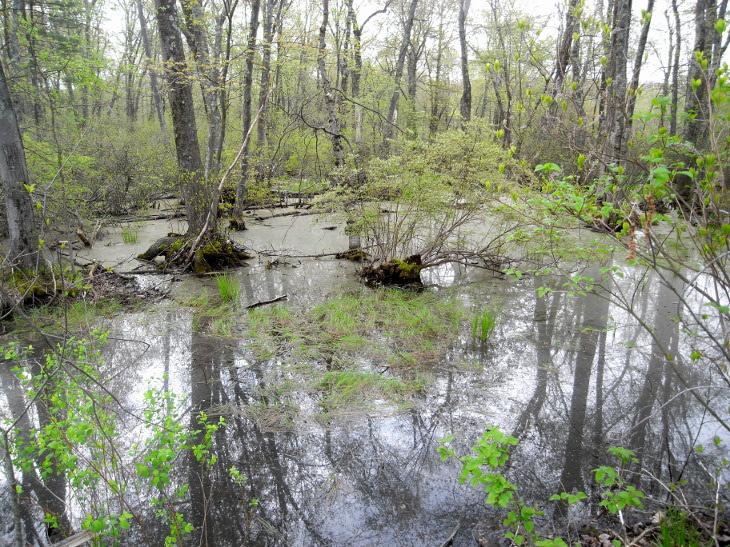Red Maple
Acer rubrum
One of the most widespread trees on the East Coast, native across the eastern United States, red maple gets its name from
dark red twigs, buds, and flowers and bright scarlet to brick red or pink fruits it develops in spring, but also due to spectacular
leaf colors of the orange-red palette it produces in the fall. New England becomes so attractive for tourists during the fall
largely due to the performance staged here by red maples. Early in spring they become conspicuous once again, producing those
hazy corridors colored subtle burgundy along highways. Red maples flower in April, before their leaves come out. The fruits
promptly ripen by the time the leaves grow full size at the end of May. The leaves have three main lobes and sometimes two
additional smaller lobes. The bark on the youngest twigs is dark red, then becoming pale gray. Mature trunk bark darkens to
nearly black, often exfoliating, its structure very variable. Red maple is a rather tall (to 40-60 ft), fast-growing, adaptable
tree that can grow in wide range of environments, although its prime habitats are wetlands. Here it often becomes a forest-forming
tree, producing the signature plant communities: red maple swamps. The tree is very tolerant of flooding, although it can
grow quite abundantly in drier habitats. Its intensive seedling production along with dense root system often makes it difficult
for other plants to compete. Red maple is sometimes exploited for maple syrup, though only on a small scale, as it does not
produce as much syrup as sugar maple.

Twig and buds, February 5, Milton

Flowering at Quincy Quarry, April 21

Ripe fruit, May 23, Dover

Red maple swamp, one of the most common plant communities in Massachusetts